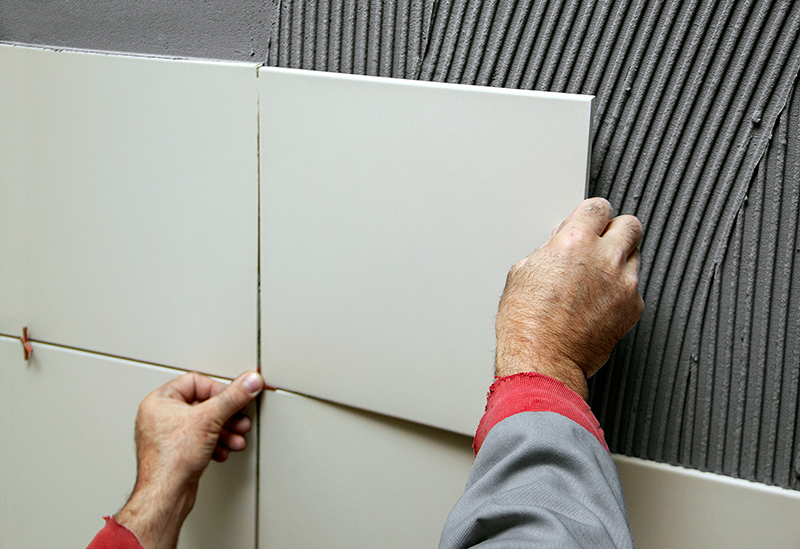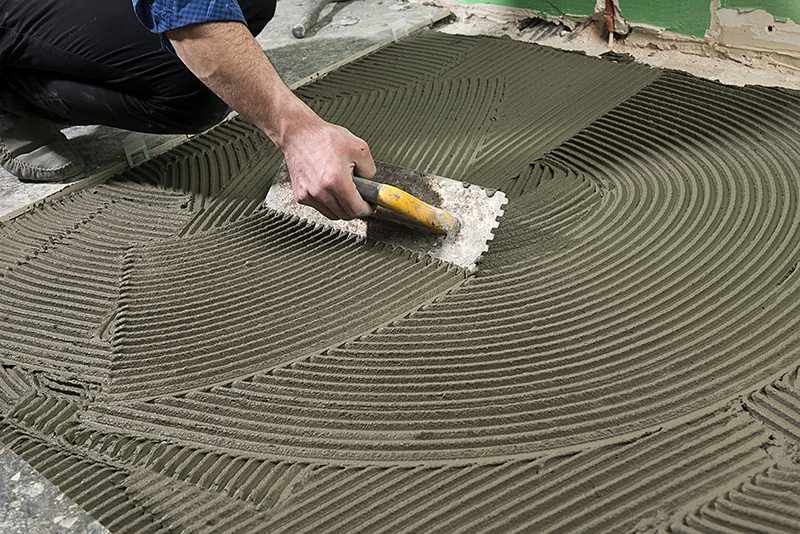Introduction
Hydroxypropyl Methylcellulose (HPMC), a cellulose-based polymer, is a common additive in the construction industry, particularly in tile adhesives. This versatile compound offers a wide range of benefits and properties that make it an essential ingredient in modern tile adhesive formulations. In this comprehensive article, we will delve into the role of HPMC in tile adhesives, its specific benefits, properties, applications, and guidelines for its effective use.
The Role of Tile Adhesives
Tile adhesives are crucial components in the construction and renovation of buildings. They serve as the adhesive medium that secures ceramic or porcelain tiles to various surfaces such as floors, walls, and countertops. Properly formulated tile adhesives must possess several key properties to ensure the longevity and durability of the installed tiles.
Key properties of an effective tile adhesive include:
1.Adhesion: Tile adhesives must provide strong adhesion to both the tile and the substrate to ensure the tiles remain firmly in place.
2.Open Time: The open time refers to the duration during which the adhesive remains workable after application. A longer open time is essential for large tiling projects.
3.Slip Resistance: Especially in floor applications, tile adhesives should offer slip resistance to prevent accidents due to tile movement.
4.Water Retention: Adequate water retention is essential to prevent the adhesive from drying out too quickly during application, allowing for proper curing.
5.Workability: The adhesive must be easy to work with, facilitating even application.
6.Sag Resistance: In vertical applications, the adhesive should resist sagging or slipping of tiles during the curing process.
7.Thixotropy: Thixotropic properties make the adhesive less viscous when agitated, making it easier to mix and apply, but it returns to its original viscosity when left undisturbed.
8.Crack Resistance: The adhesive should possess the ability to resist cracking, especially in situations where there might be movement in the substrate.
9.Water Resistance: For wet areas such as bathrooms and kitchens, the adhesive must be water-resistant to prevent tile detachment and damage due to moisture.
HPMC as an Essential Additive
HPMC is an indispensable additive in the formulation of tile adhesives because it addresses many of the aforementioned key properties. It is a hydrophilic, non-ionic cellulose ether that is water-soluble and has excellent rheological properties. These properties make it highly effective in improving the performance of tile adhesives in various ways.
Benefits of HPMC in Tile Adhesives
1.Water Retention: One of the primary benefits of HPMC in tile adhesives is its ability to retain water. During the curing process, water retention is essential to prevent the adhesive from drying out too quickly. HPMC ensures that the adhesive remains workable, allowing for proper tile placement and adjustment. This property also contributes to better curing, resulting in a stronger bond between the tiles and the substrate.
2.Improved Adhesion: HPMC enhances the adhesive properties of tile adhesives, promoting strong adhesion to both the tile and the substrate. This is crucial for the long-term durability of tile installations.
3.Open Time Extension: HPMC significantly extends the open time of tile adhesives. A longer open time is particularly advantageous in large tiling projects where it may take more time to apply adhesive and lay tiles. This extension of the open time gives installers more flexibility, reducing the risk of adhesive drying out before the tiles are in place.
4.Sag Resistance: In vertical applications, HPMC helps prevent tiles from sagging or slipping during the curing process. This ensures that the tiles remain in the desired position until the adhesive has set.
5.Improved Slip Resistance: For floor applications, HPMC enhances slip resistance, preventing tiles from moving or shifting after installation. This is crucial for safety and the long-term performance of the tiled surface.
6.Thixotropy: HPMC’s thixotropic properties make the adhesive easier to mix and apply. It becomes less viscous when agitated during mixing, making it more workable. However, it returns to its original viscosity when left undisturbed, ensuring that it stays in place on vertical surfaces and maintains its adhesive properties.
7.Crack Resistance: HPMC contributes to the adhesive’s resistance to cracking, which is vital for the durability and longevity of tile installations, especially in areas with substrate movement or stress.
8.Water Resistance: Tile adhesives containing HPMC are generally more water-resistant. This is particularly important in wet areas, such as bathrooms and kitchens, where moisture can compromise the adhesive’s performance.
Properties of HPMC in Tile Adhesives
To understand how HPMC imparts these benefits, it’s essential to delve into its specific properties:
1.Water Solubility: HPMC is highly water-soluble, which means it dissolves readily in water. This property allows it to retain water within the adhesive, enhancing workability and preventing premature drying.
2.Rheology: HPMC has excellent rheological properties, meaning it affects the flow and deformation of the adhesive. It can improve the adhesive’s consistency, making it more suitable for troweling and application.
3.Film-Forming Ability: HPMC can form a film on the surface of the adhesive, which contributes to its water retention capabilities and helps in preventing the adhesive from drying out too quickly.
4.Adhesion Promotion: HPMC enhances the adhesive properties by forming a strong bond between the adhesive and both the tile and the substrate. This bond is critical for the long-term performance of tile installations.
5.Flexibility: HPMC adds flexibility to the adhesive, making it more resistant to cracking and movement in the substrate. This property is especially important in areas where the substrate may experience some degree of flexing or expansion and contraction.
Applications of HPMC in Tile Adhesives
HPMC is widely used in various types of tile adhesives, including cement-based, dispersion-based, and ready-to-use adhesives. Here are some common applications of HPMC in tile adhesives:
1.Cement-Based Tile Adhesives: HPMC is a common additive in cement-based tile adhesives, where it enhances adhesion, water retention, and workability. It is especially valuable in large-scale tiling projects where extended open time is necessary.
2.Dispersion-Based Tile Adhesives: In dispersion-based adhesives, HPMC contributes to water retention, improving the adhesive’s workability and ensuring proper curing. These adhesives are often used for fixing ceramic and porcelain tiles.
3.Ready-to-Use Tile Adhesives: Ready-to-use tile adhesives are pre-mixed and are often used in DIY applications. HPMC plays a role in extending open time, making it easier for DIY enthusiasts to work with these adhesives.
4. Specialty Adhesives: HPMC is also used in specialty adhesives designed for specific applications, such as glass mosaic tile adhesives. In these cases, it helps enhance the adhesive’s properties, such as water resistance and slip resistance.
Guidelines for Using HPMC in Tile Adhesives
To maximize the benefits of HPMC in tile adhesives, it’s essential to follow certain guidelines:
1.Dosage: The dosage of HPMC should be determined based on the specific requirements of the adhesive formulation and the desired properties. The manufacturer’s recommendations are a good starting point.
2.Mixing: When incorporating HPMC into the adhesive mix, proper mixing is crucial. It should be added gradually to avoid clumping or lump formation. The use of high-shear mixing equipment may be necessary to ensure even dispersion.
3.Consistency: Monitor the consistency of the adhesive to ensure it meets the desired workability standards. Adjust the HPMC dosage as needed to achieve the desired results.
4.Open Time: Understand the project’s requirements and the specific tile being installed to determine the open time needed. HPMC can be used to extend the open time, but the dosage must be adjusted accordingly.
5.Substrate Conditions: Consider the condition of the substrate when using HPMC in tile adhesives. In cases where there is significant movement or stress, a higher dosage of HPMC may be required to enhance crack resistance.
6.Curing and Drying Time: Be aware that while HPMC extends open time, it may also affect the curing and drying time of the adhesive. Adjust project timelines accordingly.
7. Environmental Factors: Consider environmental factors such as temperature and humidity, as they can influence the performance of HPMC in tile adhesives. Adjust the dosage and work practices accordingly to account for these factors.
Conclusion
Hydroxypropyl Methylcellulose (HPMC) is an essential additive in tile adhesives, contributing significantly to the key properties and performance of these adhesives. Its ability to retain water, improve adhesion, extend open time, resist sagging, enhance slip resistance, and provide thixotropic and crack-resistant properties makes it a valuable component in various types of tile adhesives.
When used in accordance with recommended guidelines, HPMC ensures that tile installations are secure, durable, and aesthetically pleasing. Its application extends beyond traditional tile adhesives, as it finds use in ready-to-use adhesives, specialty adhesives, and various construction applications.
As technology and material science continue to advance, HPMC remains a trusted additive in the construction industry, aiding in the creation of reliable, long-lasting, and visually appealing tile installations in buildings around the world. Its unique properties and benefits make it a versatile and indispensable component in the formulation of tile adhesives, contributing to the quality and longevity of tiled surfaces.
Post time: Oct-31-2023


